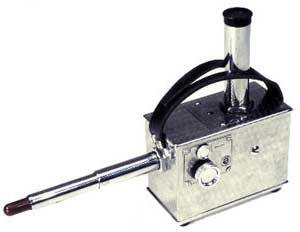
Victoreen - late 1920's
Victoreen Instrument Company started in 1928 by John Austin Victoreen, a self-taught engineer, as a group of x-ray dosimeter manufactures. He later received an honorary doctorate in science.
Victoreen is credited with building several condenser-type ionization chamber instruments in 1927 which were stored in the laboratory due to lack of need. The chamber used a carbon wall and aluminum electrode and was 1 cm3 chamber charged with a friction wheel. Glasser and Seitz made an experimental condensert-type ionization chamber with a removable chamber that could be separated from the electrometer. Glasser turned to Jack Victoreen in 1928 to market the first commercial instrument know as the Condenser R-Meter. It was an ionization meter connected to an electrometer. It soon became the industry standard. Victoreen provide 95% of the instrumentation for the South Pacific atomic bomb tests and became known as the “First Nuclear Company”. These would later become the first commercial U.S. ionization chambers developed by Victoreen in 1930. The first units were friction charged with a battery powered light for the meter. It was later known as the Victoreen R-meter.

Victoreen Condenser-R 1928

Victoreen Condenser R-Meter 1930's
These early precursors were later known as the Victoreen R-meter. Victoreen has been quoted as stating that “no one wanted what I made”. They initially manufactured ion chambers which led to the production of other special components like geiger tubes. Victoreen’s early contract to build instruments was a secret government contract not fully revealing the contributions to the development of the first atomic bomb. After the end of WWII, other contracts were let which opened commercial competition. Victoreen was the major supplier of instruments for the first atomic tests in the Marshall Islands in 1946 for the Able, Baker and Charlie tests. The Charlie test required instrumentation underwater with recording at the surface.
Victoreen produced a wide range of geiger counters and ionization chambers beginning in the mid 1930’s for use in laboratory, military and prospecting applications. Another 1930’s instrument was the Integron, an electronic integrating ionization chamber. It was improved and modified to evolve as the Radocon in 1935. In 1940, a pocket ionization chamber, a modified R-meter chamber, was developed called the Minometer. Victoreen introduced the Iometer in 1937 for measuring x-ray beams. In 1949 they offered four models with several modifications. It advertised that it was the “World’s First Nuclear Company”.
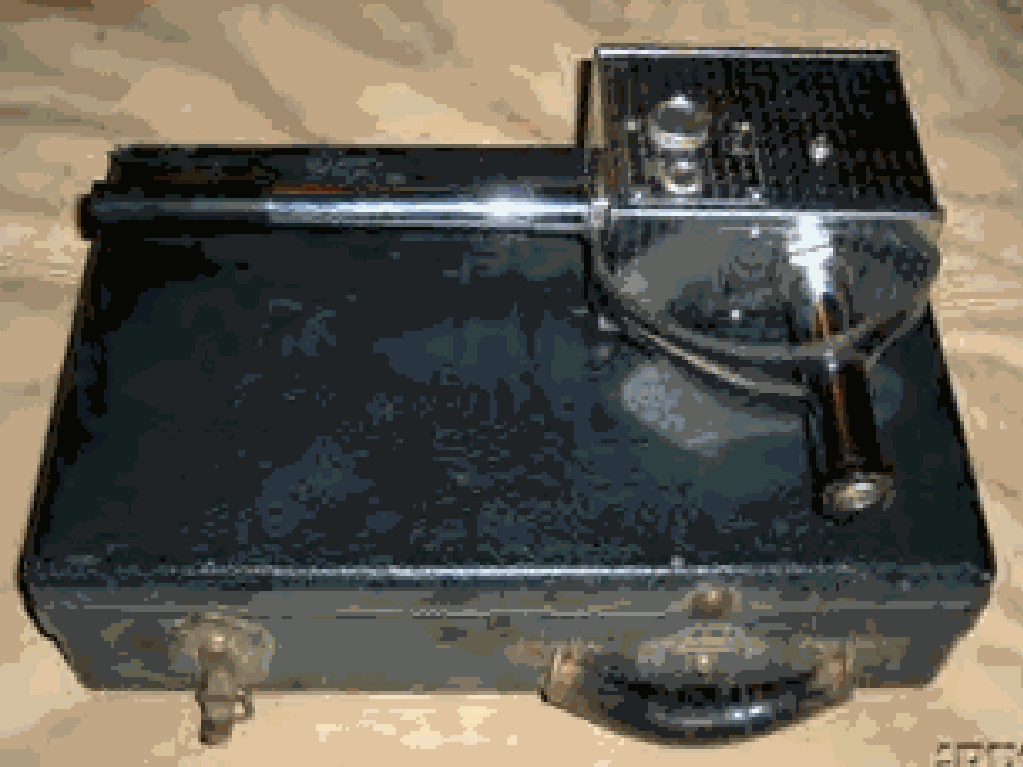
Victoreen R-Meter 1937
The portable Model 263 “Doc” was introduced in 1939 or 1940. It is believed to have dated back the early 1940’s and may be the second survey instrument developed by Victoreen. It appears to be the earliest commercial instrument of its type. It was developed by Donald Collins, a staff officer in the Manhattan Project and later worked for Victoreen and then the Landsverk Electrometer Company, and Bob Smith. It was originally code named “Doc” as part of the Manhattan Project prior to WWII. It was developed into a “little black suitcase”. The unit had a self-contained GM tube for beta and gamma detection. The Geiger tube was mounted externally and attached via a clip. It had 3 ranges and calibrated with radium. It was described as "an instrument with a distinctive background of service". The Model 241 was introduced in the late 1930’s. It was a portable beta gamma air ionization rate meter. The Model 241 is thought to be the one of the earliest commercial survey meters dating back to the last 1930’s. Victoreen was known for engineering advances in his instrumentation and readily able to adapt to the changing requirements for radiation detection.
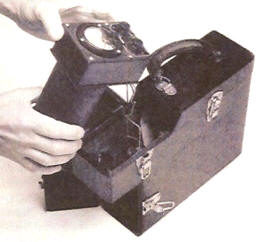
Victoreen Survey Meter 1942
In 1937, a market for nuclear instruments began to develop at the University of Chicago, Met Lab and the Critical Pile-1 (CP-1). Victoreen only had to go to his shelf of previously developed instruments and they met the need. He also developed a few special instruments for the University of Chicago. Dr. Victoreen has noted that the code names of the instruments were classified but the designs were not since many had been developed before the Manhattan Project. The contract between Victoreen and the Manhattan Project was secret, however, it should be noted that Victoreen made significant contributions to the Manhattan Projects success.
The Victoreen portable Model X-247 was an ionization chamber model that superceded the Model 263 and was designed to be more rugged for military use. It was a survey meter with a 56 cubic inches air ionization chamber and was introduced commercially in 1945 and dates back to mid-1943. During World War II, Operation Peppermint was the US military response to radioactive materials being used against US forces invading Europe at Normandy beaches. Fortunately radioactive materials were not used during the invasion.
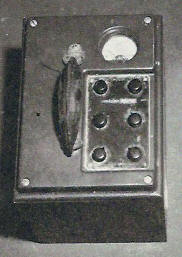
Victoreen Model X-247 1945
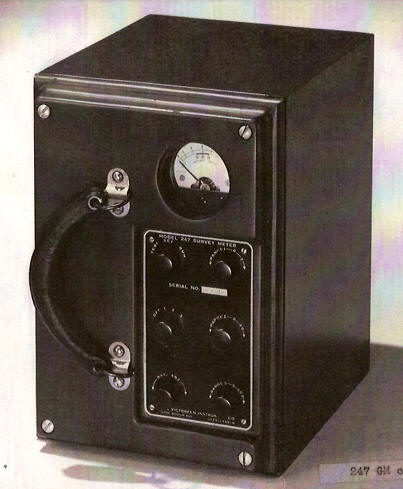
Victoreen Model 247 1945
It was noted in 1948, that the Model 247 was obsolete and sent to the tests as an emergency measure, and were not used in the tests. The units were hermetically sealied and the case is watertight. The unit came in a baked grey enamel finish. This unit became the Model 247A and came with a variety of options and exposure ranges.
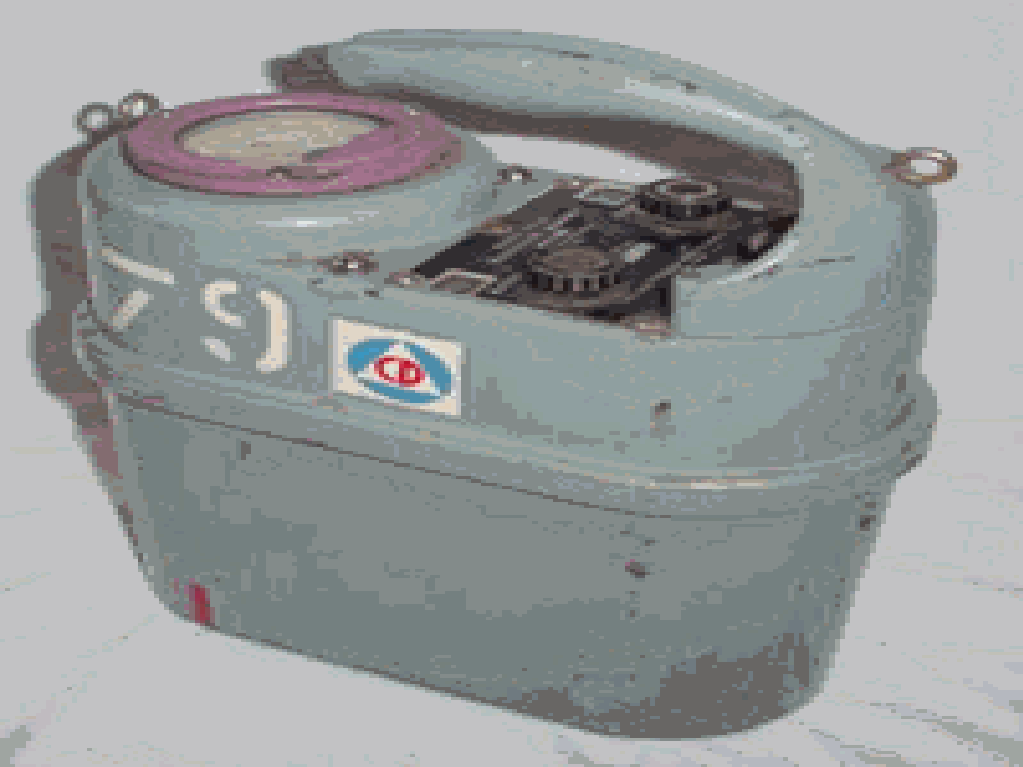
Victoreen Model 247A 1947
The Model 247A was an upgraded portable air ionization gamma rate meter.
The Model 262 was available in 1947. It was a a Roentgen calibrated instrument used to measure scattered radiation in the vicinity of x-ray or gamma ray equipment. It has a top reading of 2 mR per minute. It was developed to spot check installations for scattered radiation to determine additional protection requirements.
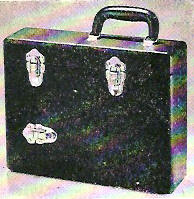
Victoreen Model 262 1947
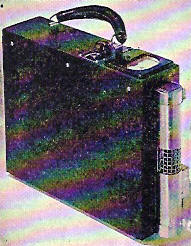
Victoreen Model 263 1947
The Victoreen Model X-263 (AN/PDR-6) dates back to about 1944. It was originally the Make 1, Model 31A survey meter. It had three ranges from 0.2, 2 and 20 mR/h. Above this range and the unit will swing off scale and audible sound will change from clicks to a steady buzz. At this point, the unit will be “paralysed” and no sound heard. Later in Jun 1945 became the Model 263. The unit was a compact, self-contained instrument with a fixed internal, rubber-mounted GM tube for beta gamma detection. It operates on 300 volt battery. It was 9” long x 2.75” wide x 6.25” high. It was calibrated to measure directly in mR/h. The X-263 was a beta gamma radiation meter. The meter is divided into tenths and the selector switch has three range settings of x1, x5 and x20 and a “heat” setting. It had a jack for headphones. The unit weighs between 2 and 4 pounds.
The unit was used by Col. Stafford Warren who was the medical direction for the Manhattan Project. He was also in charge of radiation safety at the Trinity Test in 1945. Performance tests in March 1946 show that the unit was tested in aircraft to 30,000 feet at Wright Field, Ohio by flight surgeons of the US Navy. The old GM Model X-263 was not reliable at the Crossroads Tests. The unit had been designed in a hurry to meet new requirements not available with the larger Model 263 series. It was described as “adequate on the desk of a meticulous old lady in an air conditioned laboratory, but not useful in boats.”
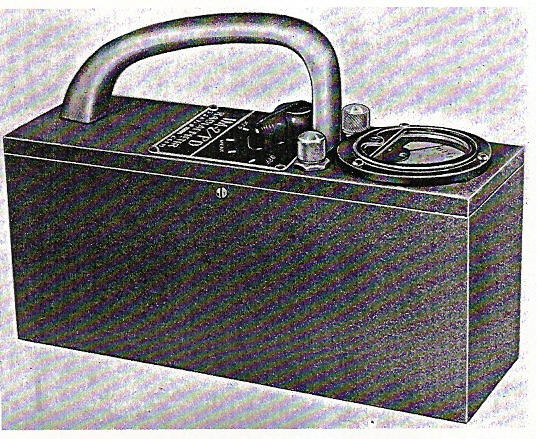
Victoreen Model X-263 1946
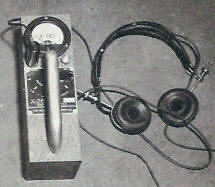
Victoreen Model X-263 1946
Although Victoreen continued to produce a product line for radiation detection instruments, this excerpt provides an introduction into the early development that started the modern nuclear detection industry.
The Model 263A (IM-1A/PD or AN/PDR-5) issued in 1948 and was an upgraded modification of the Model 263 after gaining four years or performance testing with military and civilian applications. The probe was streamlined by bringing the 24” cable out the end, knob length extended, three 300 volt batteries replace the special 960 volt battery and the weight is decreased by several pounds. The Model 263A is a portable beta gamma count rate meter with a thin wall glass 900 volt GM tube in an external probe introduced in 1947. The GM tube was filled with argon and ethyl ether. One hundred units were evaluated for possible use during Operation Sandstone in 1948 in the Pacific Island nuclear tests.
The unit was 12” x 10” x 3.25”. It weighs 13.4 lbs. The probe was 9”x1.5” with a four foot cable. The probe was 9”x1.5”. It measures beta at 1000, 10000, and 100000 cpm. The gamma scale was 0.2, 2 and 20 mR/h. It can measure up to 0.5 R per day. The minimum beta energy detected was 0.3 MeV. The beta screen was 1/32” brass and the probe opening was 2”x2.5”. It used a 1.5, 67.5 and 900 volt batteries. It had a smooth paint surface with a hinged shiny leather handle. It came in black crackle or grey enamel. The unit sold for $200 in 1947. The operation Sandstone reports indicates that the 300 unit were to be delivered to the AEC by November 1947. It was also given a military designation denoted by AN/PDR-5. Some examples of its uses outlined in the 1947 manual include health hazards, decontamination, prospecting for radioactive ores, locating misplaced radium needles, and for postal inspectors to determine if shipping regulations are being observed.
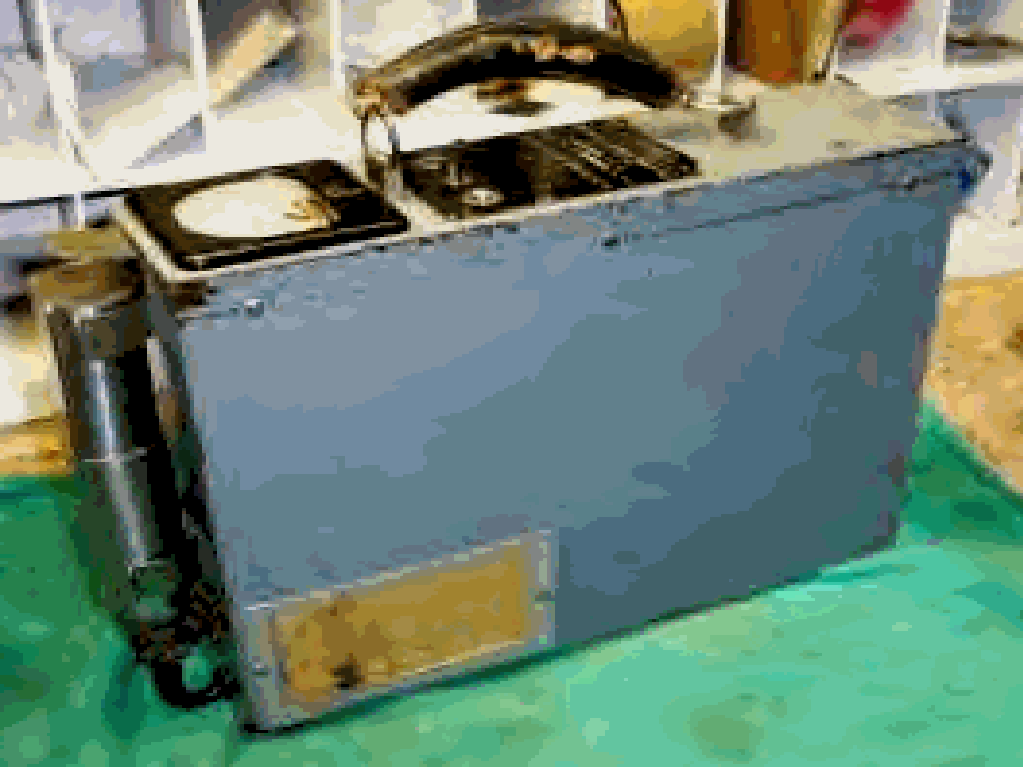
Victoreen Model 263-A 1951
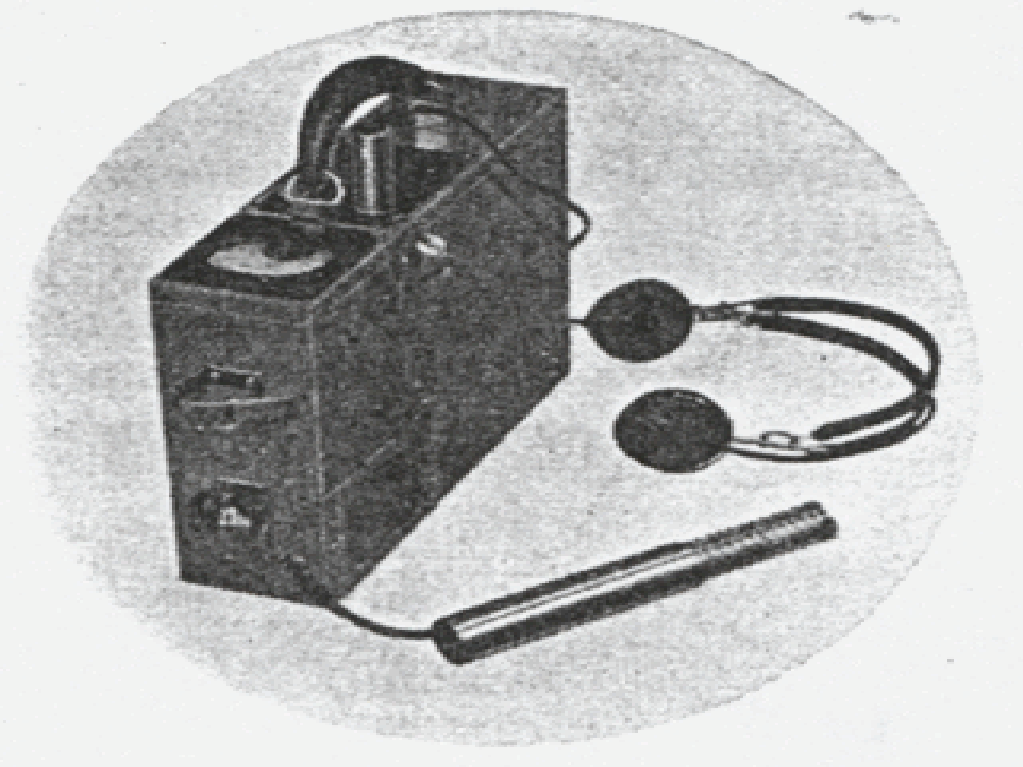
Victoreen Model 263A 1948
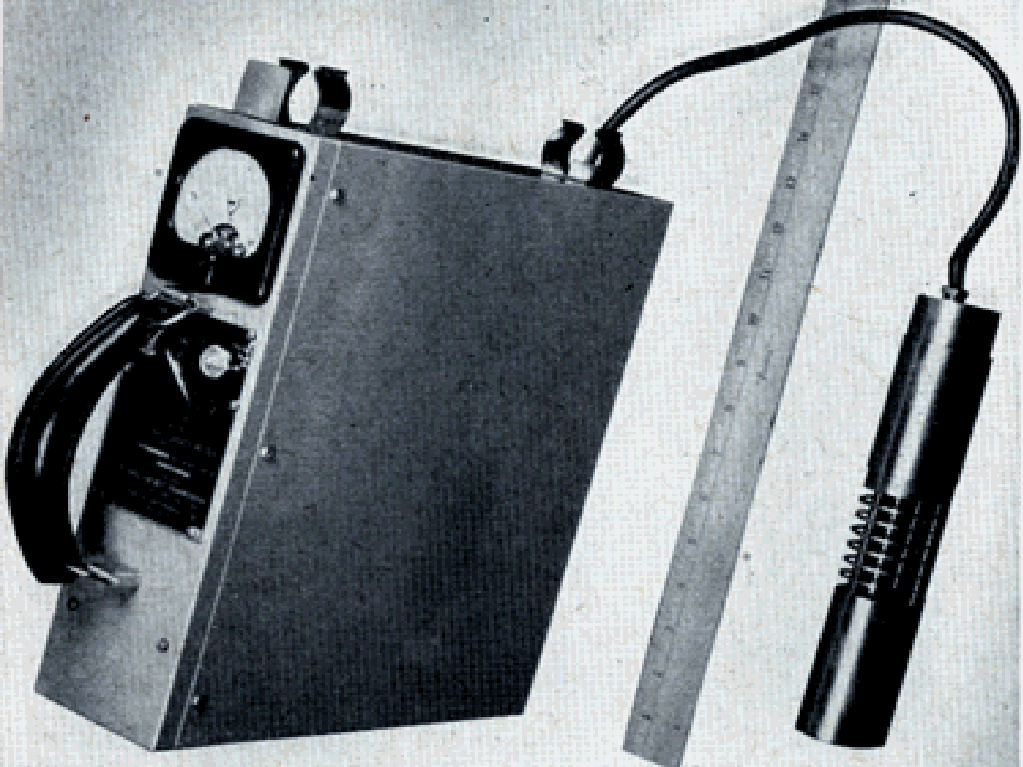
Victoreen Model 263A 1950
The Model 263B is a modification of the Model 263A and was introduced in 1948. It has more rugged construction, decreased height, and decreased weight. The meter has three ranges 130, 1300, and 13000 cps or 0-20 mR/h. Average intensity of beta gamma can be read from the microammeter which is calibrated to gamma rays of radium. The geiger counter is housed in a probe that is mounted outside the end of the case. The GM tube was filled with argon and ethyl ether. It used three 300V, one 1.5V and one 67.5V batteries. The unit weighed 11.5 lbs. The unit was used at the Los Alamos Scientific Laboratory in 1954. The military designation is AN/PDR-5A.